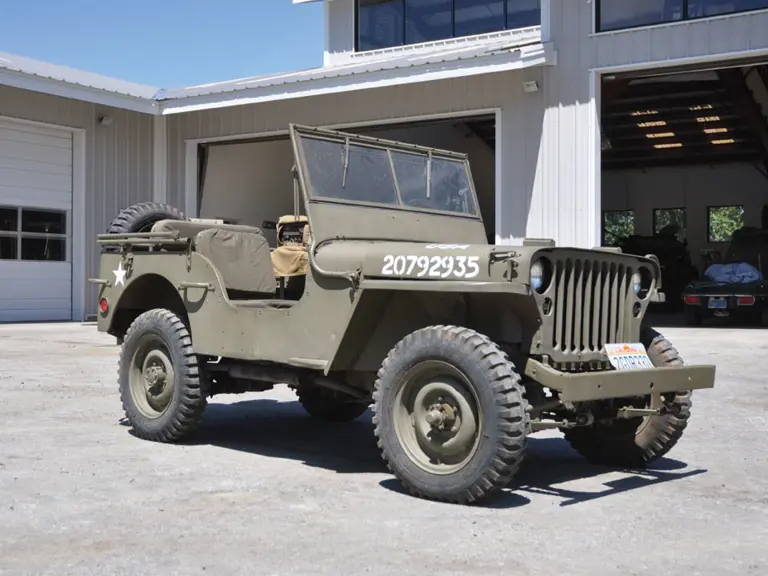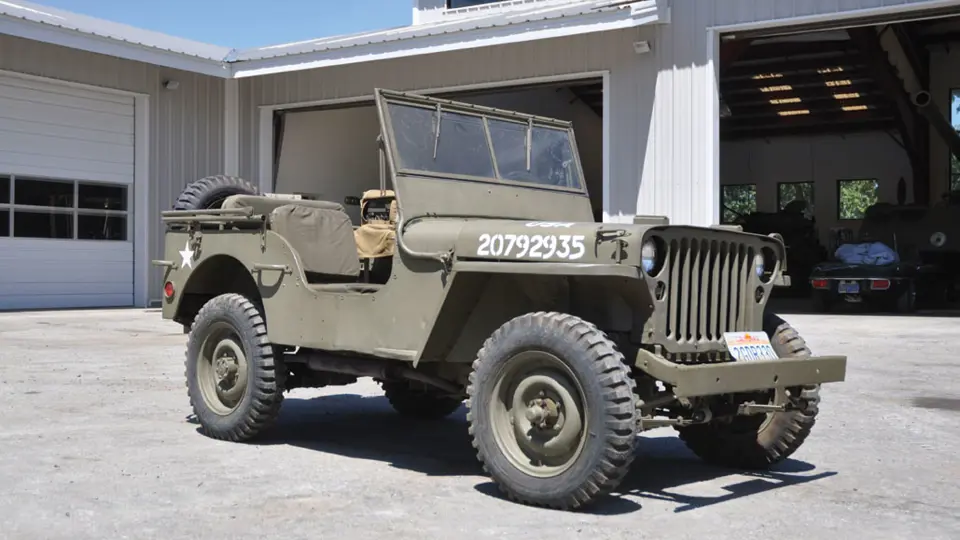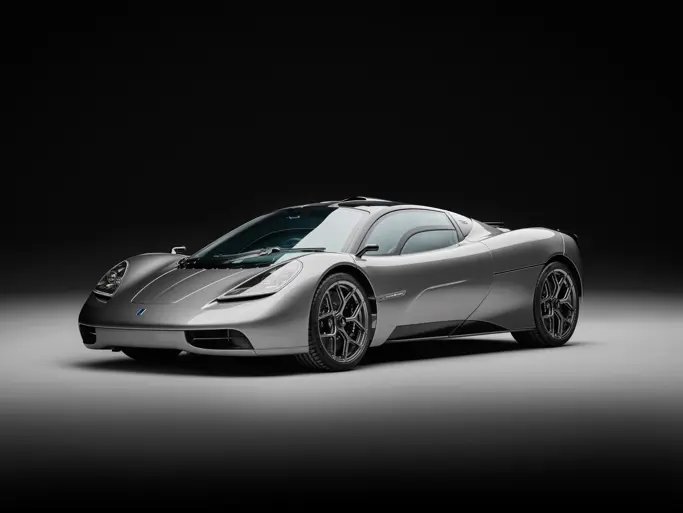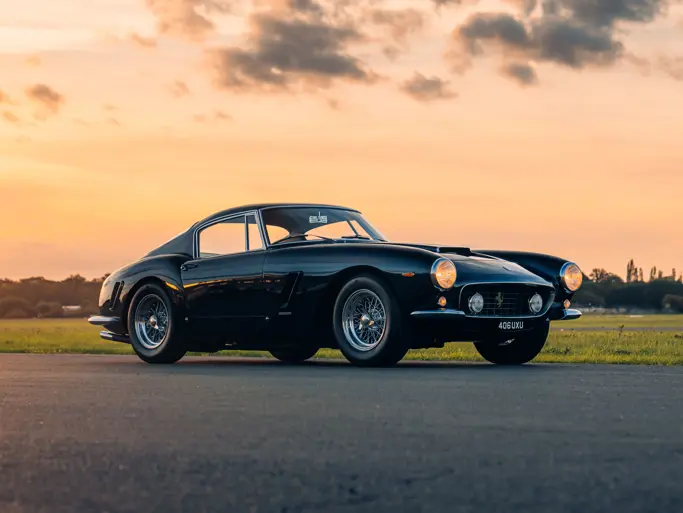 | Portola Valley, California
| Portola Valley, California
Weight: 1.8-tons (1,655-kg)
Length: 11' 0” (3.35-m)
Width: 4' 7” (1.40-m)
Height: Top down: 4' 4” (1.32-m); Top Up: 6' 0” (1.82-m)
Crew: 1-4
Armor:
None
Weapons:
None
Ammunition:
None
Engine: 4-cylinder Ford GPW, 54-hp
Power/weight: 30-hp/ton
Fuel Capacity: 15-USG (56-l)
Range: 285-miles (458-km)
Speed: 65-mph (104-km/h)
The vehicle being offered, Ford GPW, serial number 116,751, was delivered on December 15, 1943. It is an older restoration that is in excellent condition. The exterior paint is in excellent condition. All lights and reflectors are present. The tires are in very good condition. The seats are in excellent condition. All driver’s instruments are present. A radio, gas can, pioneer tools and jack are all included with the vehicle.
Although the Willys design for the Jeep, the Willys MB was standardized; the Army did not feel that Willys would be able to produce enough of them to meet the numbers they required. Ford Motor Company, who had also been in the running to design a Jeep, was contracted to supplement the Willys production line by building an identical copy of the MB, designated “GPW”. G indicates government contract vehicle, P means an 80-inch wheelbase reconnaissance car and W is for a Willys pattern vehicle.
Ford began producing the GPW in late 1941 and built them at six different facilities. Various minor changes were made to the GPW during its production run including the Ford designed, stamped grille that Chrysler trademarked in 1979 for their Jeep. Ford produced 277,896 GPW’s during the war.
The Jeep, whether it be MB or GPW was one of the most recognized vehicle types to come out of the Second World War. It was used in all theaters of war beginning with U.S. entry into the war on December 7, 1941. Jeeps were exported in great numbers to all U.S. allies and were prized by its enemies for its reliability, lightweight and speed. The Jeep was used as a prime mover for light anti-tank guns and mortars, an ambulance, a communications vehicle and just about anything else that soldiers could think of. The GPW and MB saw a long post-war life in both military and civilian use with the French Army still using a licensed produced copy into the 1980s.
Transport Cost to Storage: $660





